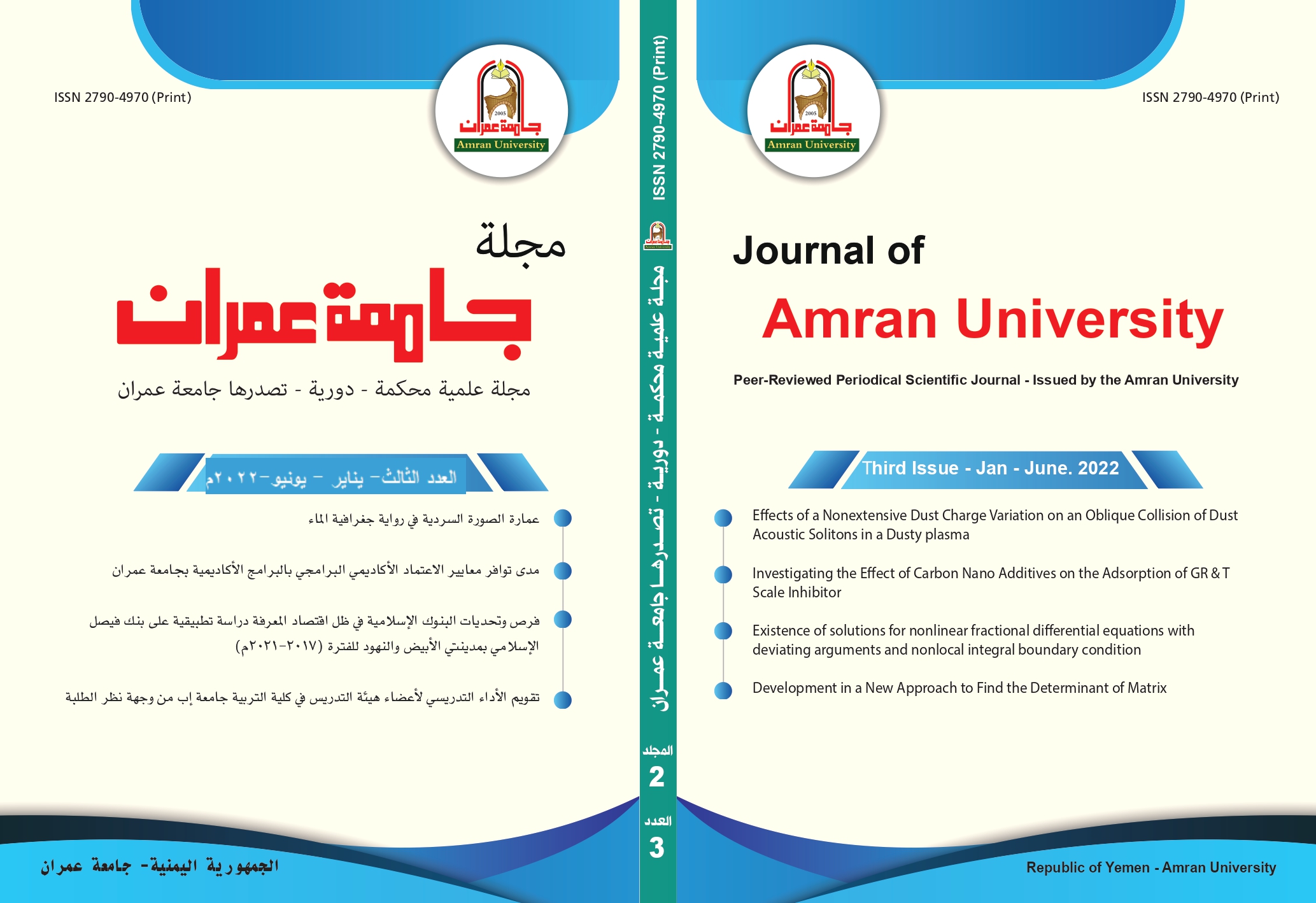Investigating the Effect of Carbon Nano Additives on the Adsorption of GR & T Scale Inhibitor
DOI:
https://doi.org/10.59145/jaust.v2i3.37Keywords:
Squeeze treatment, Nano carbon-based enhanced squeeze treatment, GR & T scale inhibitor, carbon nanomaterials, grahenen nanoplates, multi-layer graphene,, carbon nanotubes, functionalized-carbon nanotubesAbstract
Scale deposition is a prominent issue in the flow assurance that needs to be prevented to avoid reduction in the oil production. Scale includes various types of non-organic salts that might deposit in the reservoir and/or in the production tubing under different production conditions. A common practice to prevent scale deposition is to carry on scale inhibitor squeeze treatment. However, conventional squeeze treatment suffers from slow adsorption rate, limited adsorption amount and quick desorption rate. Collectively, the conventional squeeze treatment suffers from short lifetime and the operation must be repeated multiple times a year, which adds more cost. Nanotechnology is an emerging technology which has various applications in the oil and gas industry. Consequently, Nano carbon-based enhanced squeeze treatment (NCEST) was introduced to overcome squeeze treatment shortcomings and enhance the treatment lifetime through coating the nearby area of the wellbore with carbon based nanoparticles. However, the application of recent nanofluid-based coating technology was limited to specific scale inhibitors (EDTA & PPCA) as well as particular nanomaterials (CNT & GO). This work is aimed at investigating the adsorption of a new scale inhibitor (GR&T scale inhibitor) into four different carbon nanomaterials (Graphene Nano plates, Multi-layer graphene, carbon Nanotubes and Functionalized-carbon Nanotubes) under a static condition. Due to time and apparatus constraints, the scope of the work will be limited to investigating the adsorption of (GR & T) scale inhibitor which is provided by Petronas to only four carbon nanomaterials at concentrations within a range of (2000-20,000 ppm). In this research, the adsorption of (GR & T) scale inhibitor into four different carbon Nano additives was tested and screened. Then, the best carbon nanomaterial (Graphene Nano plates which has not been studied before in the zone of Nano carbon-based enhanced squeeze treatment) was selected for the next stages of investigation in which the optimum concentration as well as the optimum condition of dispersion were identified. Also, the role of surfactant addition with the introduction of a new, safer and cut-price surfactant (gum Arabic) on the adsorption and dispersion improvement was approached. Furthermore, the effect of soaking time upon the Nano additive adsorption was detected. On top of that, the maximum adsorption capacity of the carbon nanomaterial with higher concentrations of GR &T scale inhibitor was tested as well.
Downloads
Published
How to Cite
Issue
Section
License
Copyright (c) 2022 JOURNAL OF AMRAN UNIVERSITY

This work is licensed under a Creative Commons Attribution-NonCommercial-NoDerivatives 4.0 International License.

